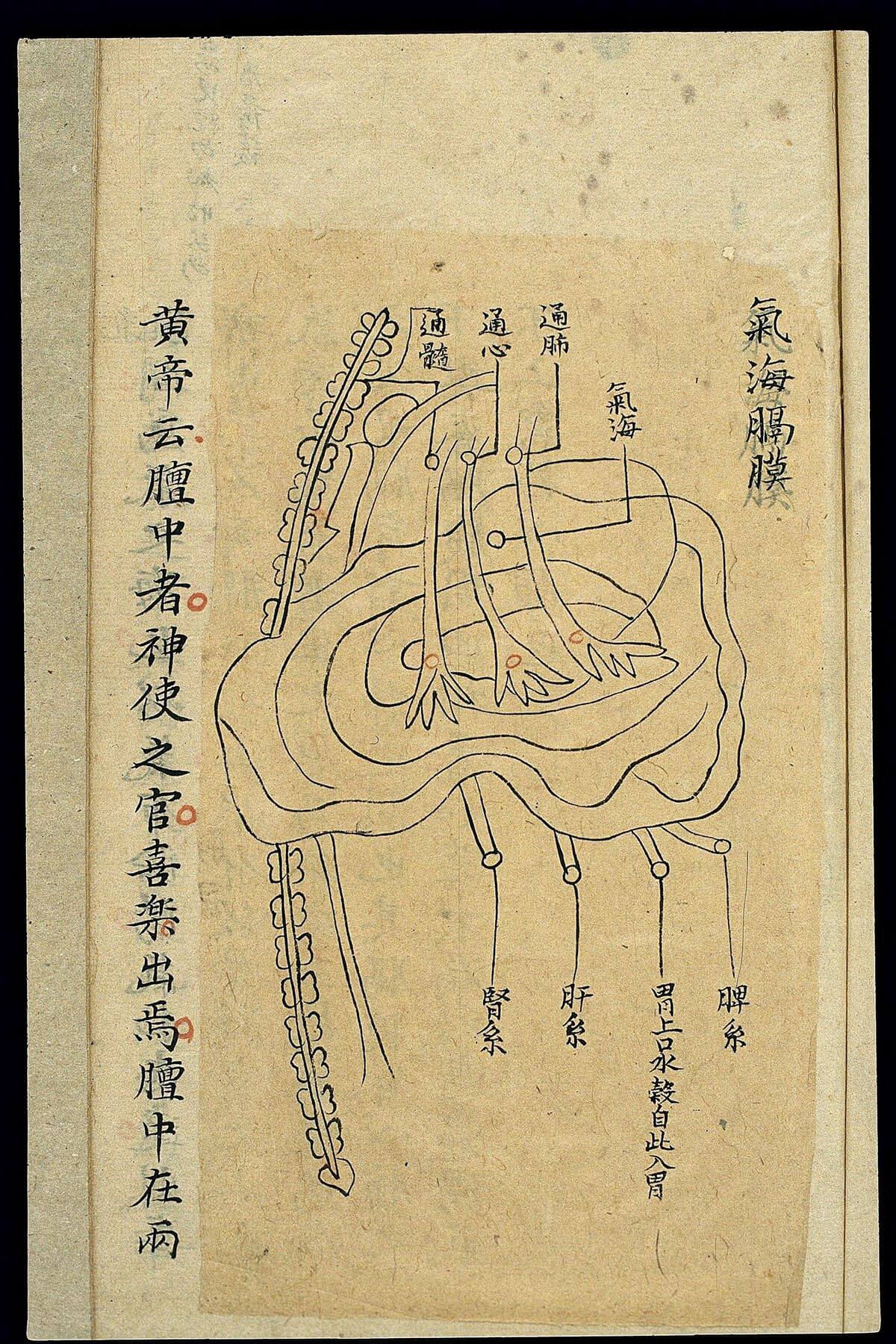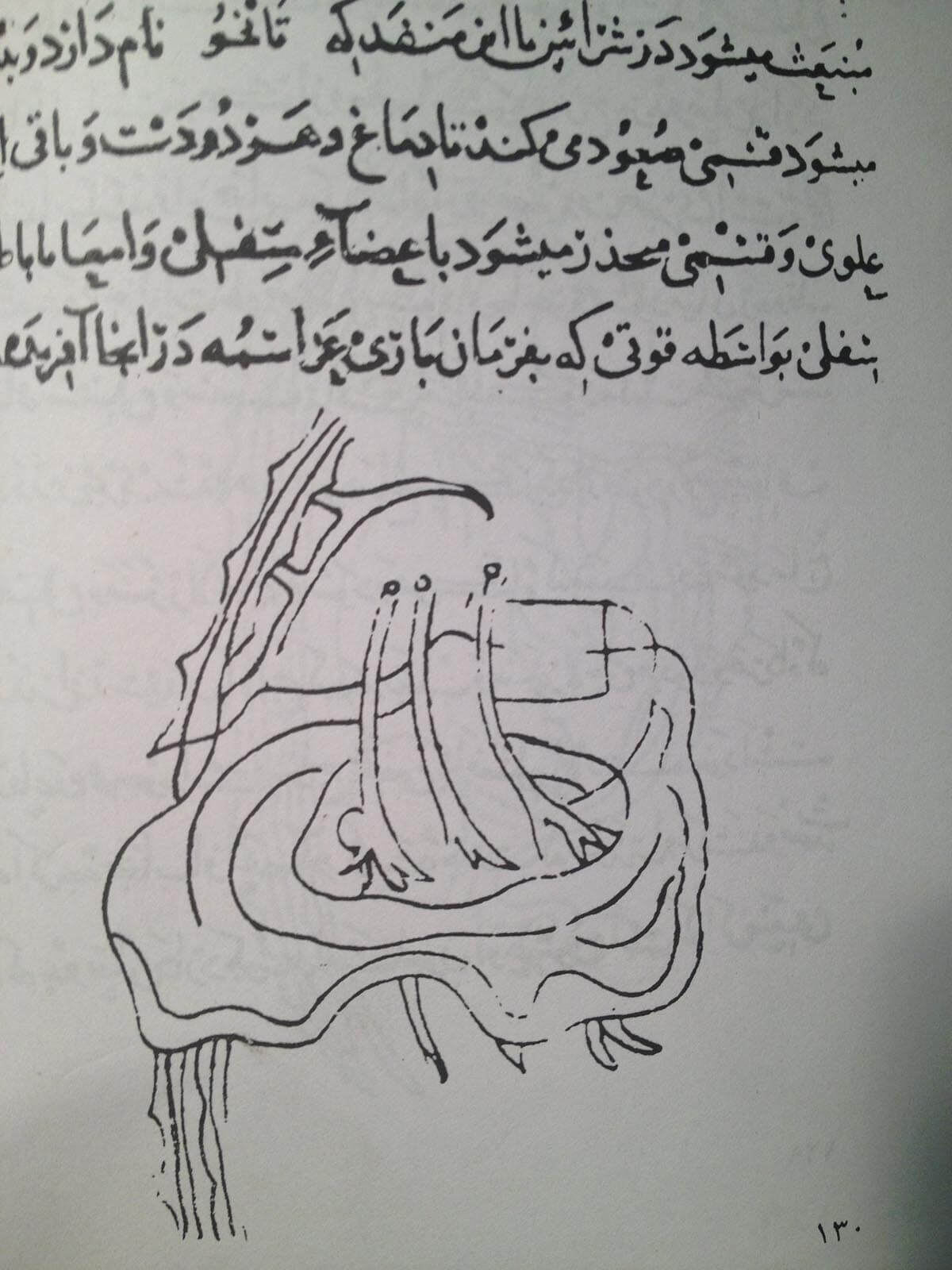

A Qing period manuscript illustration of the Yuanmen maijue neizhao tu 元門脈訣內罩圖 (Internal Visualisation Charts from the ‘Primordial Portal’ Secret Art of the Pulse), attr. Hua Tuo, 3rd century CE. This chart shows the position of Qi Hai (the Sea of Qi, the diaphragm).
Library of China Academy of Chinese Medical Sciences
© Wellcome Library, London, L0038697